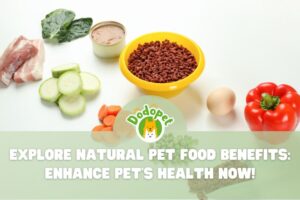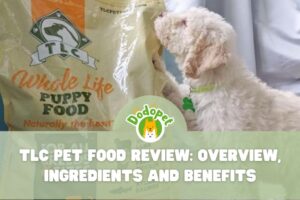Learn the secrets of chewy pet food, a champion for pets’ dental health. Learn how your pet’s benefit from its components and how it plays a part in oral care for animals. For the best dental hygiene, learn how to incorporate chewy pet food into your pet’s diet. Discover the world of happier smiles!
Chewy Pet Food: What It Is and Why Its Beneficial
“Chewy” pet food typically refers to a type of pet food that has a soft and chewy texture. This is in contrast to traditional dry kibble or wet canned pet food, which have different consistencies. Chewy pet food can be beneficial for certain pets and situations for various reasons:
- Many pets find chewy pet food more palatable and appealing than dry kibble or canned food. The soft and moist texture can be more enticing for picky eaters.
- Some chewy pet foods are designed to promote dental health. They may have a texture that helps remove plaque and tartar from a pet’s teeth as they chew, contributing to better oral hygiene.
- Chewy pet food can be especially beneficial for pets with dental issues, missing teeth, or those who have trouble chewing harder foods. It is also easier for puppies and senior pets to eat.
- Many chewy pet foods have a higher moisture content than dry kibble, which can help keep pets hydrated. Adequate hydration is crucial for overall health.
- Some pets have sensitive stomachs or digestive issues and may find it easier to tolerate and digest chewy food. The moisture content can be gentler on the digestive system.
- It can be useful for hiding medications. You can often wrap pills or medications in a small portion of chewy food to ensure your pet takes their medication without resistance.
- Chewy pet foods are available in various formulations, including those for weight management. They can help control portion sizes and calorie intake, making it easier to manage your pet’s weight.
- Offering chewy food as part of your pet’s diet can provide variety and prevent mealtime boredom. It’s also convenient for pet owners who prefer a ready-to-serve option.
- Senior pets, who may have dental issues, diminished appetite, or trouble eating, can benefit from the softer texture of chewy pet food.
- If you have a finicky eater, chewy food might be a solution to entice them to eat and ensure they get proper nutrition.
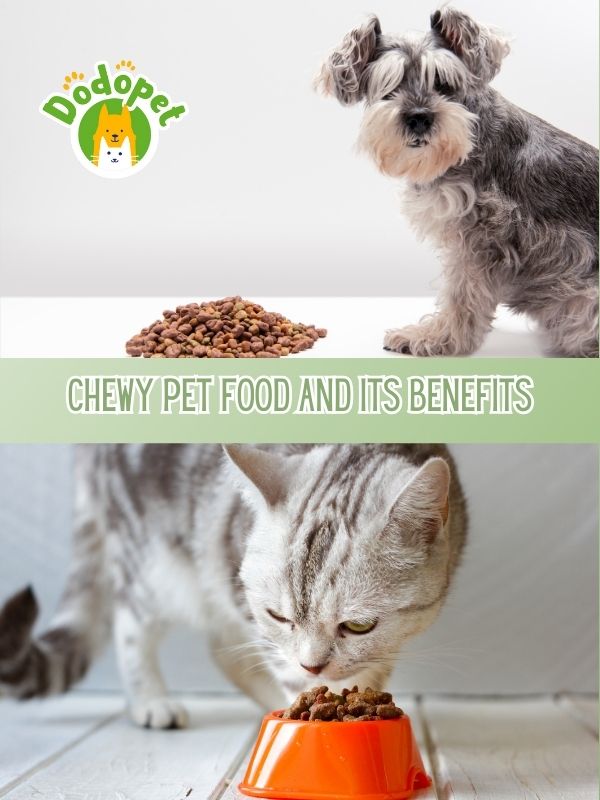
Chewy pet food and its benefits
Ingredients Making Chewy Pet Food a Dental Health Champion
Chewy pet food, with its special blend of nutrients that promote oral hygiene, can be a dental health champion. The major elements that contribute to its oral health advantages are as follows:
- Texture and consistency: This pet food’s soft and chewy texture is an important aspect in improving tooth health. It stimulates pets to chew more deeply, which aids with plaque removal and gum massage.
- Natural Abrasives: Many chewy pet foods include natural abrasives like cellulose or ground rice. These ingredients provide a gentle scrubbing action against the teeth, aiding in plaque and tartar removal.
- Enzymes: Enzymes such as protease and amylase are found in some formulations. These enzymes aid in the breakdown of food particles and the inhibition of the growth of dangerous bacteria in the mouth, hence lowering the risk of dental disease.
- Antioxidants: Antioxidants such as vitamin C and E are frequently added to promote gum health. They help to maintain healthy gums by combating inflammation and oxidative stress in the oral cavity.
- Omega-3 Fatty Acids: Omega-3 fatty acids, which are typically found in fish oil, offer anti-inflammatory qualities that can help gum tissue and lower the risk of gum disease.
- Essential Nutrients: Chewy pet diets are often intended to contain key nutrients such as calcium and phosphorus, which are necessary for strong teeth and bones.
- Low Sugar Content: Because sugar promotes bacterial development in the mouth and contributes to tooth decay, these meals often have less added sugar.
- Few or no artificial ingredients: Many chewy pet meals prioritize natural ingredients and eliminate artificial flavors, colors, and preservatives, which may contribute to dental difficulties.
- Moisture level: While not a component in and of itself, the higher moisture level in chewy pet food helps maintain a moist environment in the mouth, preventing dryness that can lead to gum discomfort.
- Taurine: Taurine is an important amino acid that is frequently incorporated in cat food formulas to improve general dental and cardiac health.
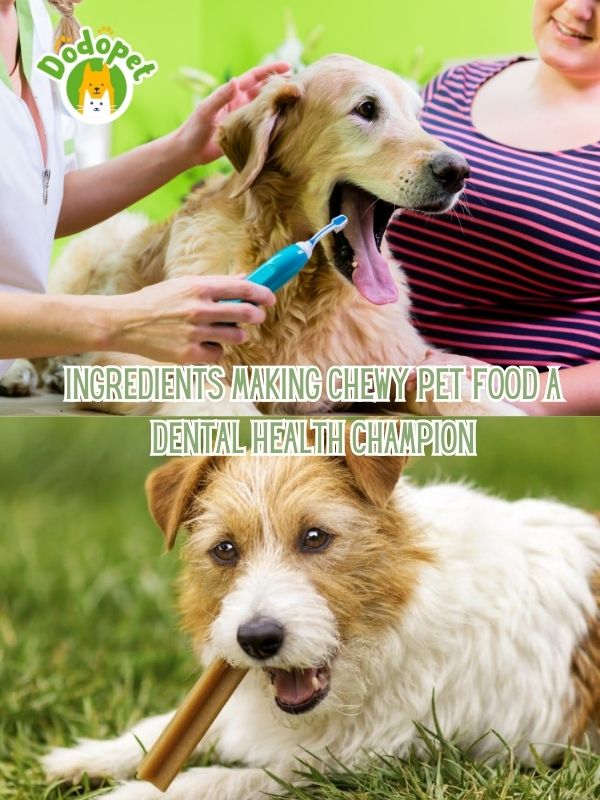
Ingredients Making Chewy Pet Food a Dental Health Champion
The Role of Chewy Pet Food in Dealing with Common Pet Oral Issues
Chewy pet food is important in managing and preventing common oral diseases that pets suffer. Here’s how it can effectively address these issues:
- Getting rid of plaque and tartar: Many Chewy pet foods have chemicals that aid in the breakdown of plaque and tartar, which can cause gum disease and other dental issues. Some foods, for example, contain chelated minerals, which are minerals that have been linked to amino acids in order to be more easily absorbed by the body. This can assist to strengthen teeth and gums while also lowering the likelihood of plaque and tartar buildup.
- Freshening breath: Some Chewy pet treats contain additives that can help with breath freshening. Some meals, for example, contain parsley, which has natural antibacterial effects. Others include cranberry, which has been demonstrated to aid in the reduction of bacteria in the mouth.
- Providing dietary fiber: Dietary fiber can aid in the removal of food particles and plaque from the teeth, hence preventing dental issues. Some Chewy pet treats are designed to be high in dietary fiber.
- Promoting healthy gums: Chewy pet food may have ingredients that encourage healthy gums. Some meals, for example, include omega-3 fatty acids, which have been demonstrated to lower gum inflammation. Others contain glucosamine and chondroitin, which assist to cushion and protect joints, especially the joints in the jaw.
- Reduce gingivitis: The soft and moist texture of chewy pet food is kinder on sensitive or irritated gums. Pets with gingivitis may find it easier to eat soft kibble than hard kibble. Reduced gum irritation can aid in the healing process in pets with moderate gingivitis.
- For pets with teeth loss: Chewy pet food is simpler to consume for pets who are missing teeth, particularly molars or premolars. It necessitates less mastication force, allowing individuals to enjoy their meals without difficulty.
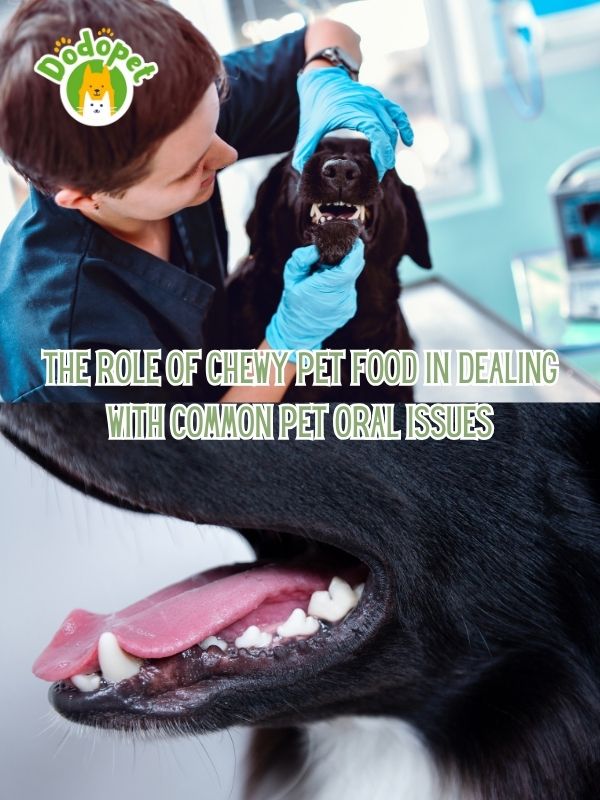
The Role of Chewy Pet Food in Dealing with Common Pet Oral Issues
How to Effectively Integrate Chewy Pet Food into Your Pet’s Diet
Effectively integrating chewy pet food into your pet’s diet requires careful consideration and a gradual transition to ensure their health and well-being. Here’s a step-by-step guide to help you make a smooth transition.
- Consult your veterinarian. It’s always a good idea to consult with your veterinarian before making any modifications to your pet’s food. They can advise you on whether Chewy pet food is a good fit for your pet’s specific needs, as well as how to transition your pet to the new diet.
- Select the best food for your pet. Chewy has a large selection of pet food, so it’s critical to select the proper food for your pet’s age, breed, and nutritional demands. If you are unsure about which food to use, see your veterinarian.
- Gradually introduce the new food to your pet. Don’t change your pet’s food all of a sudden. This might induce stomach distress and digestive issues. Instead, gradually introduce the new food over a 7-10 day period.
Begin by combining a small amount of the new meal with their existing food. Over the next few days, gradually increase the amount of new food and decrease the amount of old food.
- Keep an eye out for any signs of stomach distress in your pet. Stop the transition and talk with your veterinarian if your pet develops any vomiting, diarrhea, or gas.
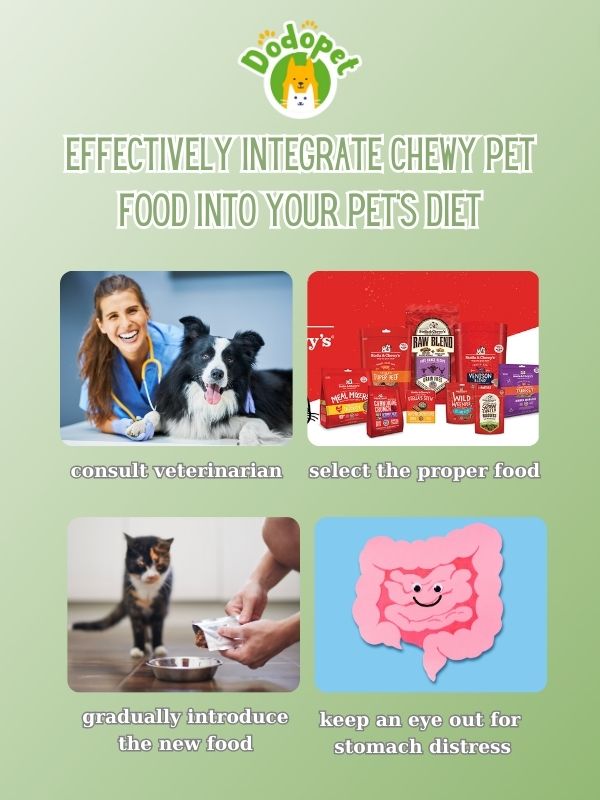
How to Effectively Integrate Chewy Pet Food into Your Pet’s Diet
Here are additional suggestions for including Chewy pet food into your pet’s diet:
- If your pet is a picky eater, mix the new food in with their favorite wet food or treats.
- If your pet is overweight, you should consider a weight control formula.
- If your pet has food allergies or sensitivities, search for a meal that is specifically designed for these situations.
- Read the labels carefully to ensure that the food you purchase suits your pet’s specific needs.
- You can simply incorporate Chewy pet food into your pet’s diet with a little time and care. You can help your pet obtain the nutrients they need to stay healthy and happy by following these guidelines.
Here are some additional ways to include real food in your pet’s diet:
- To your pet’s food, mix in a tiny amount of cooked or raw meat, chicken, or fish.
- Provide fruits and vegetables to your pet, such as carrots, apples, or blueberries.
- Probiotics can be given to your pet through yogurt or kefir.
- For healthy fats, add a teaspoon of olive oil to your pet’s meal.
- Before making any modifications to your pet’s food, consult with your veterinarian, especially if they have any health issues.



